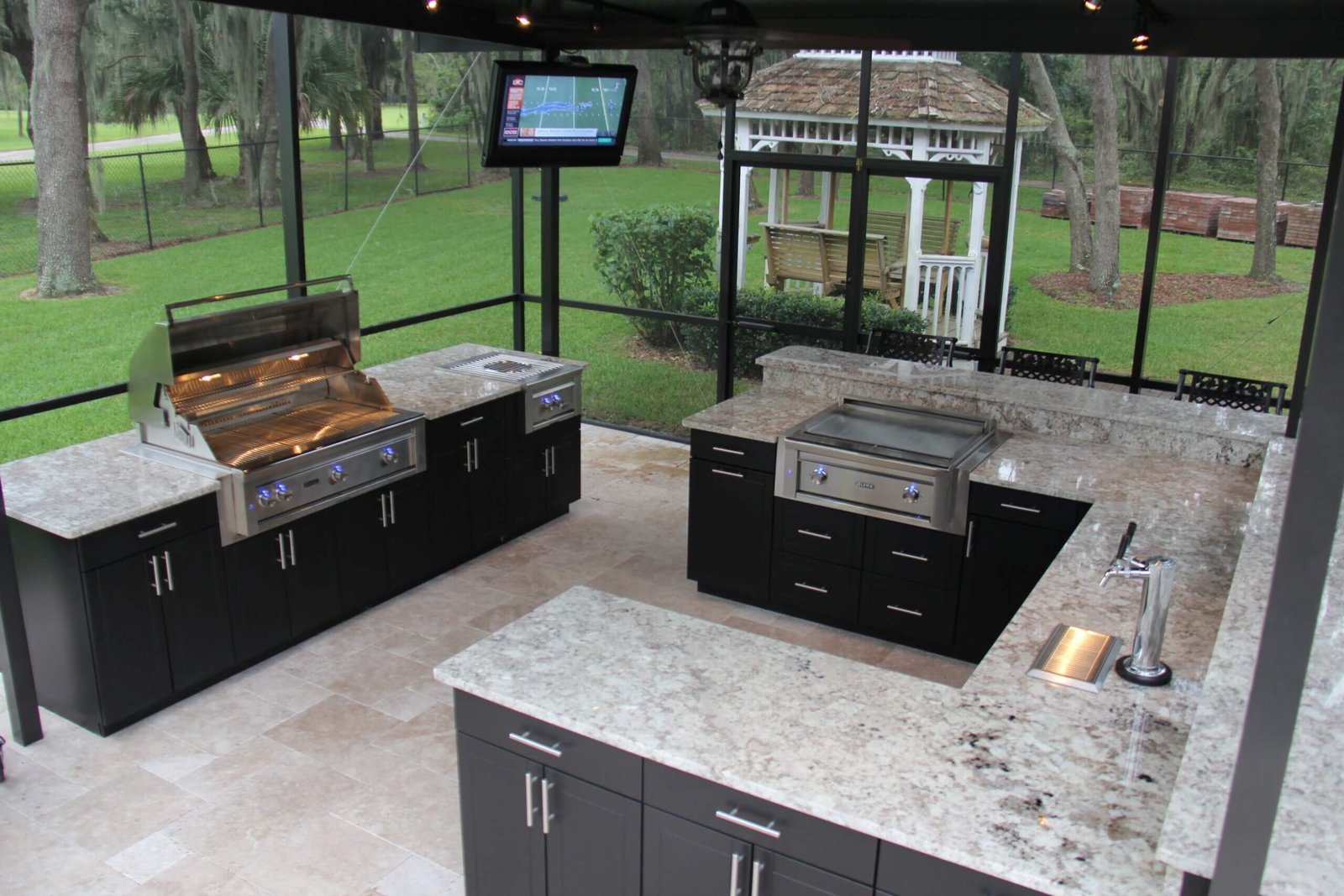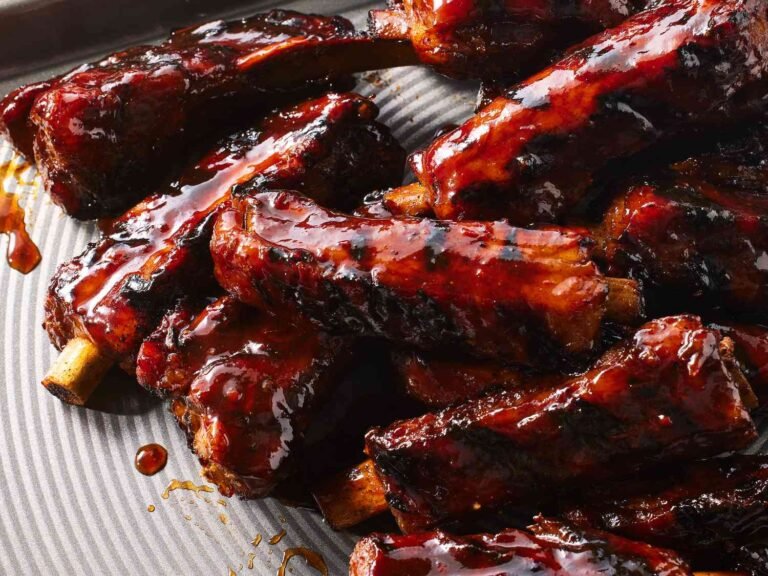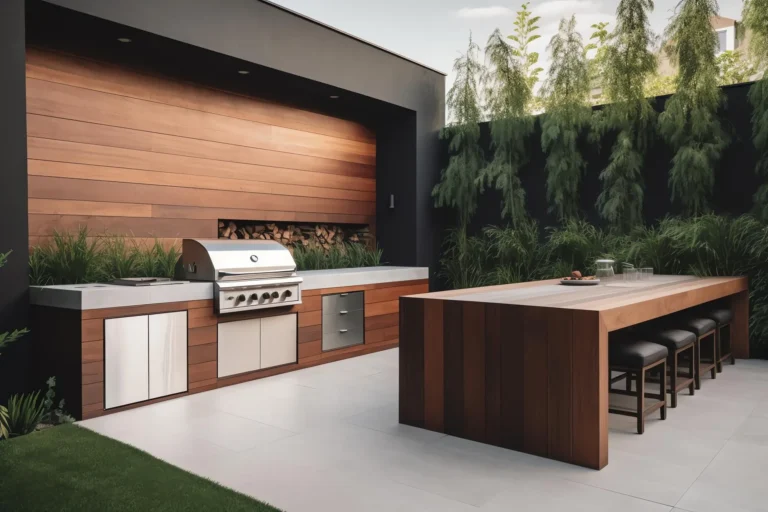Braving the elements takes more than just a sturdy grill. An outdoor kitchen must endure rain, wind, and sun.
Your alfresco cooking space deserves the same attention to durability as the meals you craft there. With the right weatherproofing, your outdoor kitchen can serve as a year-round hub for barbecues and family gatherings. Imagine whipping up your favorite dishes under the open sky without fretting over the weather forecast.
To achieve this, you’ll need to shield appliances, safeguard surfaces, and secure your culinary oasis from unpredictable weather. This guide will lay out the essential steps to protect your outdoor kitchen from the whims of Mother Nature. By focusing on durable materials and smart design, you can create a weather-resistant space that’s both functional and inviting. Read on to discover how to transform your outdoor kitchen into a robust and reliable extension of your home.
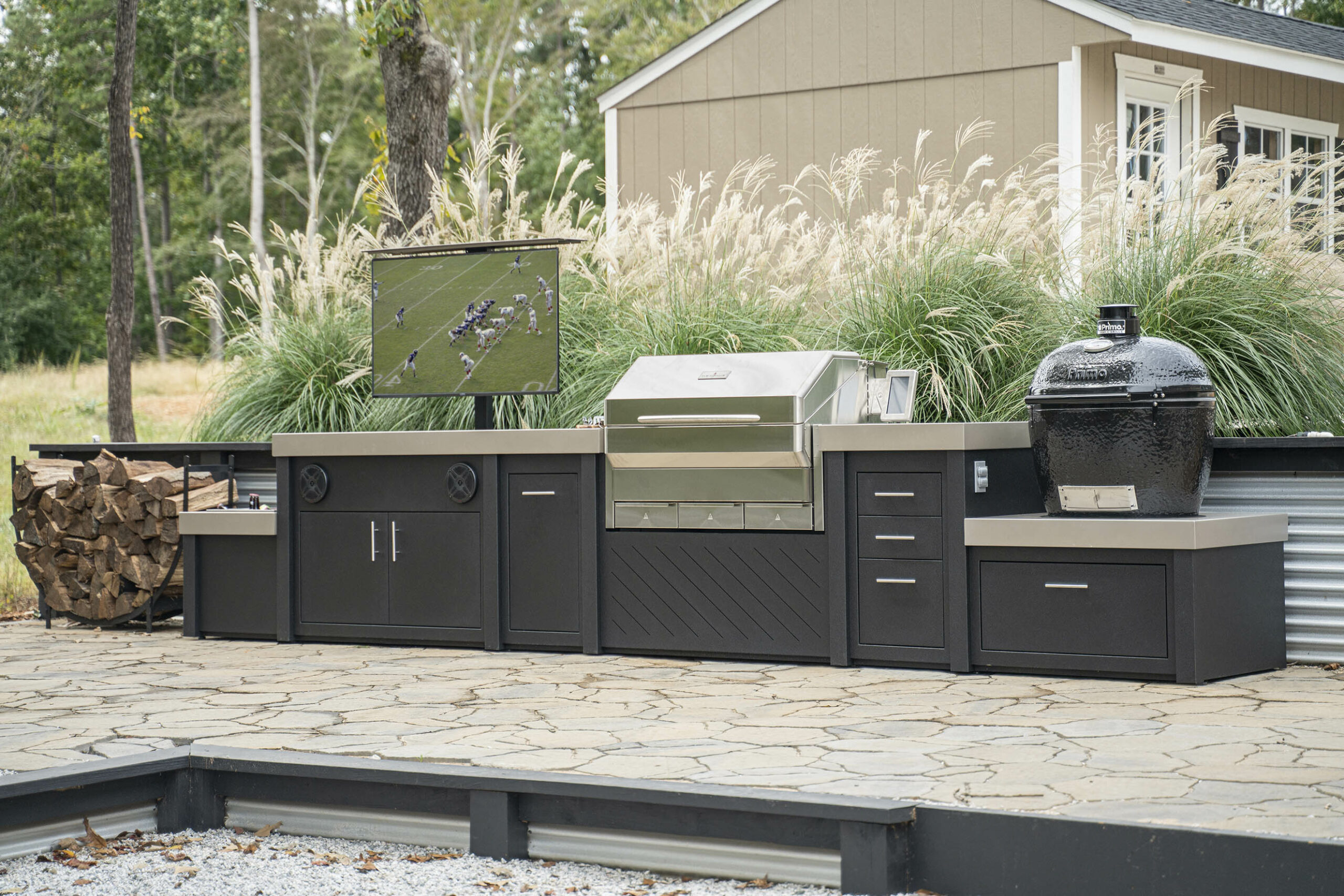
Introduction To Outdoor Kitchen Weatherproofing
Welcome to the world of outdoor kitchen weatherproofing. Imagine a place where your backyard feasts never end, no matter the season. A spot where rain or shine doesn’t dictate the menu. This dream turns into reality with the right protection for your outdoor kitchen. Let’s dive into the essentials of shielding your culinary haven from the elements.
Importance Of Protecting Your Investment
An outdoor kitchen is more than a cooking area; it’s a lifestyle upgrade. It deserves care. Weather can wear down surfaces and appliances fast. Rust and damage can follow. Regular maintenance and weatherproofing are key. They save you money and keep your kitchen safe and stunning.
Benefits Of A Weatherproof Outdoor Kitchen
A kitchen safe from weather stands the test of time. It means less repair and more cooking. Family and friends enjoy the space without weather worries. Your kitchen stays clean and ready for any event. Peace of mind is the true reward of a well-protected outdoor kitchen.
Choosing Weather-resistant Materials
Creating an outdoor kitchen requires tough materials. Rain, sun, and wind can damage weak ones. This part talks about choosing strong materials that last. Focus on countertops and cabinetry. These choices make or break your outdoor kitchen.
Countertops That Can Stand The Heat And Rain
Granite leads the pack. It resists heat and doesn’t stain easily. Concrete is another strong choice. It handles heat well and can face heavy rain. Both need sealing for extra protection. Sealing stops water from getting in.
Cabinetry Materials Built To Last
Stainless steel wins for cabinets. It fights rust and lasts years. Wood looks good but needs care. Choose teak or cedar. They stand up to weather better. Remember, sealing wood helps it last longer. Good care means more years of use.
Incorporating A Roof Or Pergola
Embracing the joys of outdoor cooking often means contending with the whims of the weather. Protecting your outdoor kitchen is not just about durability, but also comfort and style. A roof or pergola can shield your space from sun and rain, transforming it into a year-round haven for culinary adventures.
Design Considerations For Overhead Protection
- Ensure adequate coverage for all cooking and dining areas.
- Account for airflow and ventilation to handle smoke and heat.
- Integrate lighting and heating elements for evening and cooler weather use.
- Match the design to your home’s architectural style for a seamless look.
Materials Suitable For Outdoor Overhead Structures
| Material | Benefits | Maintenance |
|---|---|---|
| Wood | Natural look, sturdy | Regular sealing |
| Metal | Durable, modern | Occasional cleaning |
| Vinyl | Low upkeep, versatile | Rinse with water |
Choosing the right material for your outdoor kitchen’s roof or pergola is crucial. Wood offers warmth and tradition, while metal provides a sleek, contemporary edge. Vinyl is an easy-care option for busy homeowners. Consider these factors to ensure your outdoor kitchen stands the test of time, and your gatherings stay memorable, rain or shine.
Protective Finishes And Sealants
Outdoor kitchens face the elements daily. Sun, rain, and temperature swings can damage surfaces. Protective finishes and sealants shield wood and stone. They keep moisture out and maintain appearance. Proper sealing extends your kitchen’s life and beauty. Let’s explore the right ways to protect your outdoor culinary space.
Best Practices For Sealing Wood And Stone
Wooden cabinets and stone countertops need special care. Choose sealants designed for outdoor use. They resist UV rays and weather wear. Apply them in dry conditions for best adhesion. Ensure the surface is clean before starting. Use brushes or rollers for even coverage. Let the sealant dry fully before using the area.
When To Reapply Finishes For Longevity
Time and use wear down protective layers. Inspect your outdoor kitchen yearly. Look for signs of wear or damage. Reapply finishes at the first sign of aging. This keeps wood and stone safe from water and sun. It prevents costly repairs down the line. Regular maintenance keeps your outdoor kitchen in top shape for years.
Weatherproof Appliances And Equipment
Outdoor kitchens bring joy and value to a home. They also face weather challenges. This section covers how to keep appliances and equipment safe from the elements.
Selecting Appliances For All Seasons
Choose durable appliances. Look for weather-resistant materials like stainless steel. They last longer and resist rust. Make sure appliances have a cover. This protects them from rain and sun. Consider the climate. Some appliances work better in certain weather. A good grill can handle heat and cold.
Maintenance Tips For Outdoor Kitchen Equipment
Clean regularly. Wipe surfaces and remove grease. This prevents damage. Check for wear. Replace any broken parts quickly. Cover when not in use. This keeps equipment safe from weather. Store sensitive items inside during winter. This avoids frost damage.
Utilizing Outdoor Kitchen Covers
Outdoor kitchens face the brunt of nature. Protecting them is vital for longevity. Covers shield grills, counters, and appliances from weather damage. Let’s explore cover options and how to pick the right one.
Types Of Covers For Full Kitchens And Individual Pieces
Different covers serve various purposes. Full kitchen covers provide complete protection. They shield every element from sun, rain, and snow. Covers for individual pieces focus on specific items like grills or fridges. They are perfect for kitchens with mixed exposure levels.
How To Choose The Right Cover For Your Needs
Choosing a cover depends on climate and kitchen layout. For harsh weather, choose durable, waterproof materials. Fit is crucial. Measure your space to ensure a snug cover that won’t fly away. Ventilation is key to prevent moisture buildup. Look for covers with air pockets to keep your outdoor kitchen dry and mold-free.
Drainage And Waterproofing Strategies
Your outdoor kitchen needs to withstand the elements. Rain, snow, or spills can cause damage. Good drainage and waterproofing keep it safe and functional. Let’s explore how to ensure water flows away and your storage stays dry.
Ensuring Proper Water Runoff
Water should not pool in your outdoor kitchen. A slight slope in the flooring directs water away. This prevents standing water and reduces slip hazards. Use materials like concrete or natural stone for best results. These are tough and manage water well.
Options For Waterproof Cabinets And Drawers
Outdoor cabinets face rain and humidity. Choose materials like stainless steel or marine-grade polymer. These resist rust and water damage. Sealants and protective coatings add extra protection. Your storage stays dry, and your items remain safe inside.
Climate Considerations And Seasonal Adjustments
Adapting your outdoor kitchen for changing seasons ensures year-round enjoyment. Consider weather-resistant materials and design elements that protect against the elements.
Outdoor kitchens bring joy. They mix cooking and nature. But weather matters. Climate and season changes affect outdoor kitchens. Preparation is key. Let’s explore how.Adapting Your Outdoor Kitchen To Different Weather Conditions
Weather changes. Your outdoor kitchen must adjust. Start with materials. Choose weather-resistant ones. Stainless steel works well. It fights rust. For countertops, think granite. It handles heat and cold. Covering areas helps. A roof or large umbrella blocks rain and sun. Think about wind. Place grills and stoves where wind is less. This keeps flames stable. Drainage is vital. Rain should flow away from your kitchen. This prevents damage.Transitioning Your Space Between Seasons
Seasons shift. Your outdoor kitchen must too. Winter needs special care. Cover appliances. This protects them from snow and ice. Remove any water hoses. They can freeze and break. In spring, check everything. Look for winter damage. Repair as needed. Clean your space. Get ready for more outdoor cooking. Summer means more use. Keep your kitchen clean. Check gas lines and connections. Safety first. Fall is prep time. Clean thoroughly. Cover your kitchen or bring items inside. This protects them during winter. Each season has its steps. Follow them. Enjoy your outdoor kitchen year-round.Expert Tips And Common Mistakes
Outdoor kitchens transform backyards into vibrant social hubs. Yet, they face weather’s whims. Knowing how to weatherproof your space is key. Let’s explore expert advice and common mistakes in outdoor kitchen weatherproofing.
Advice From Outdoor Kitchen Professionals
- Choose durable materials: Opt for stainless steel, marine-grade polymer, or stone.
- Consider a roof: A pergola or awning adds protection from sun and rain.
- Secure electrical fittings: Use weatherproof covers for sockets and switches.
- Install proper drainage: Prevent water accumulation; slant surfaces slightly.
- Use outdoor-rated appliances: Ensure they can withstand temperature changes.
Weatherproofing Errors To Avoid
- Ignoring local climate: Materials should match your weather conditions.
- Skipping maintenance: Regular cleaning and treatment extend longevity.
- Avoiding covers: Protective covers shield appliances and furniture.
- Forgetting ventilation: Good airflow prevents mold and smoke damage.
- Overlooking storage: Dry, secure storage protects tools and accessories.
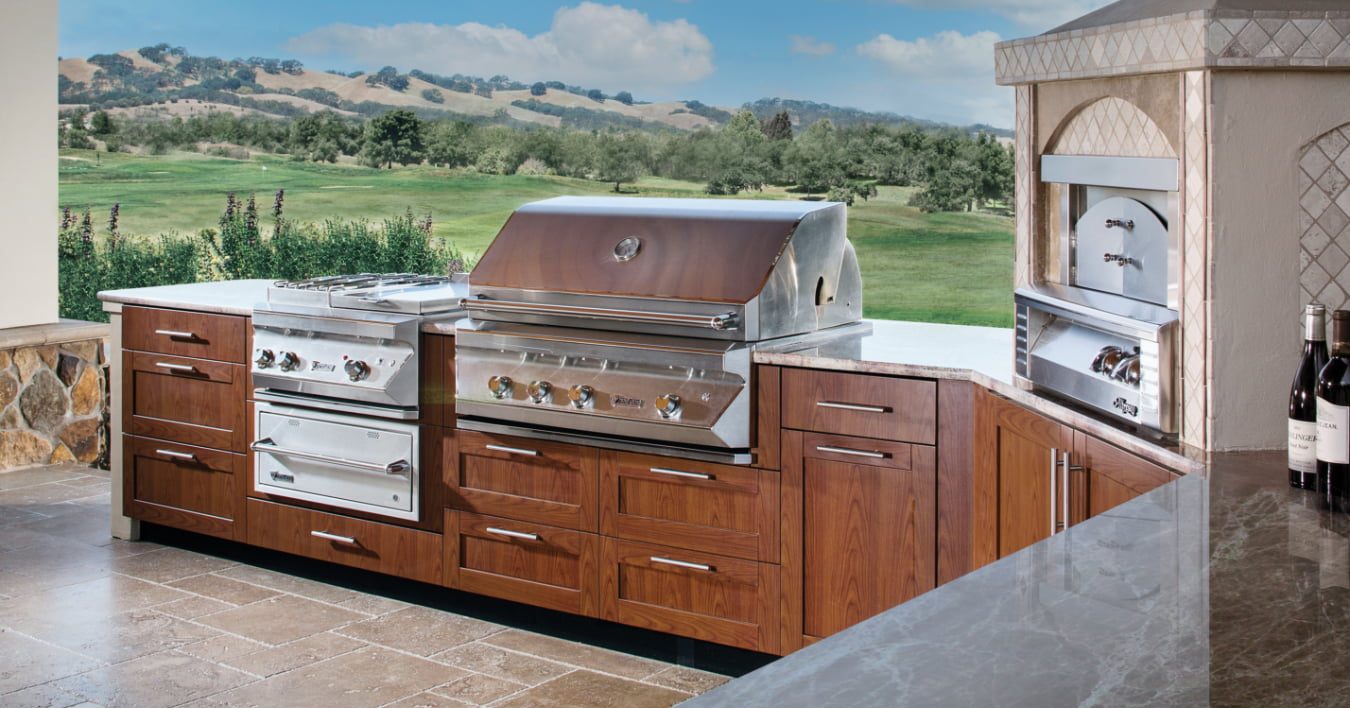
Conclusion: Enjoying Your All-weather Outdoor Kitchen
With an all-weather outdoor kitchen, every season is a chance to dine under the sky. Careful weatherproofing extends the life of your investment and enhances enjoyment. It’s time to embrace the benefits of a fully weatherproofed outdoor kitchen.
Reflecting On The Value Of Weatherproofing
Weatherproofing shields against rain, snow, and sun. It prevents damage and saves money on repairs. An outdoor kitchen that’s weatherproof means more than durability. It’s about uninterrupted cookouts and perfect gatherings, no matter the forecast.
Next Steps To Take After Weatherproofing
After weatherproofing, maintenance is key. Check seals and covers regularly. Clean surfaces to avoid wear. Update your space with weather-resistant accessories. And most importantly, make the most of your outdoor kitchen by hosting friends and family often, creating lasting memories.
Frequently Asked Questions
What Materials Are Best For Weatherproofing Outdoor Kitchens?
Outdoor kitchens benefit from durable, weather-resistant materials like stainless steel for appliances, natural stone or concrete for countertops, and treated wood or composite decking for structures. These materials withstand the elements and maintain longevity.
How Do I Protect My Outdoor Kitchen From Rain?
Installing a pergola or roof structure shields your outdoor kitchen from rain. Additionally, using waterproof covers for appliances and furniture ensures extra protection during heavy downpours, keeping your outdoor space dry and functional.
Can Outdoor Kitchens Withstand Winter Conditions?
Yes, with proper weatherproofing, outdoor kitchens can endure winter conditions. Insulated grill covers, frost-resistant materials for surfaces, and weatherproof cabinets help maintain the integrity of your outdoor kitchen throughout the colder months.
What Is The Best Flooring For An Outdoor Kitchen?
The best flooring options for an outdoor kitchen are concrete, brick, natural stone, and ceramic tiles. These materials are not only weather-resistant but also easy to clean and maintain, providing a durable and attractive foundation for your outdoor cooking space.
Conclusion
Ensuring your outdoor kitchen can face the elements is key. Simple steps make a big difference. Seal surfaces, choose durable materials, and cover appliances. Regular maintenance keeps your space safe and functional. Your gatherings stay fun, no matter the weather.
Ready to enjoy your outdoor kitchen all year? Start weatherproofing today. Keep cooking and making memories, rain or shine!

